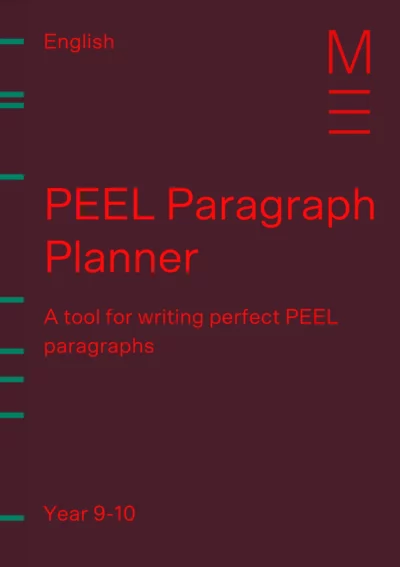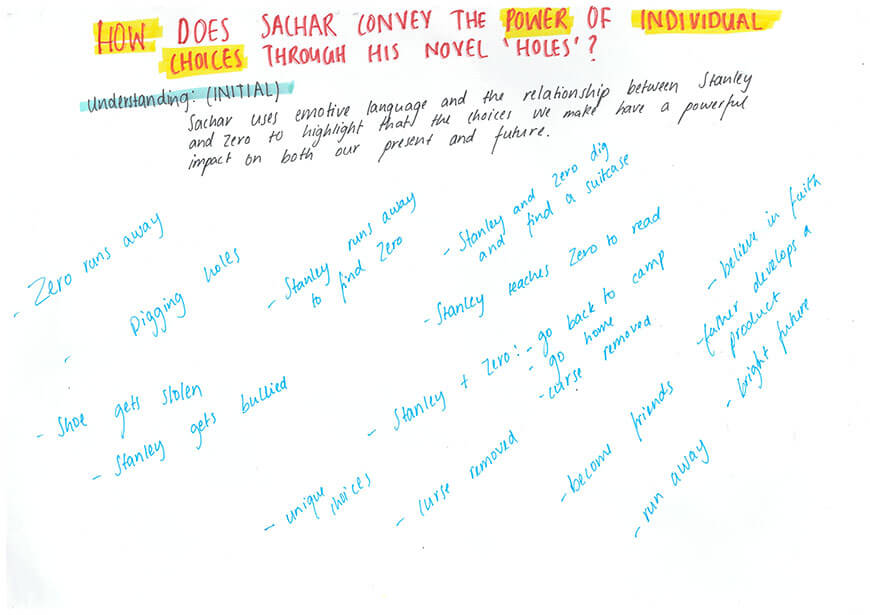Welcome to Matrix Education
To ensure we are showing you the most relevant content, please select your location below.
Select a year to see courses
Learn online or on-campus during the term or school holidays
Learn online or on-campus during the term or school holidays
Learn online or on-campus during the term or school holidays
Learn online or on-campus during the term or school holidays
Learn online or on-campus during the term or school holidays
Learn online or on-campus during the term or school holidays
Learn online or on-campus during the term or school holidays
Get HSC Trial exam ready in just a week
Get HSC exam ready in just a week
Select a year to see available courses
Science guides to help you get ahead
Science guides to help you get ahead

Are you anxious that your writing won’t be up to scratch for High School? To help you with your transition from Year 6 to Year 7 English, we’ve developed this post to help you write the perfect extended response in only 6 steps.
Did you nod your head as you read these questions?
We know the struggle. We get it.
To help you out, we are giving you our 6 step plan on how to write an extended response.
Learn to write detailed and insightful paragraphs and score better marks! Fill out your details below to get this resource emailed to you. "*" indicates required fields
Download your free step-by-step PEEL planner

Download your free step-by-step PEEL planner
The key to writing a 20/20 extended response lies in mastering how to write PEEL paragraphs and practising this skill.
Let’s have a quick overview of what junior students are taught at Matrix (Don’t worry, we’ll go into it deeper further down this post):
They make some common blunders:
Do you see yourself in these 5 common struggles?
That’s okay. These struggles can be removed and writing can become easy and enjoyable. Let’s see how our 6 step guide will help you write the perfect extended response.
Now, let’s look at how to write that outstanding extended response in depth. To help you understand the process we’ll put the steps into perspective by going an example from the novel ‘Holes,’ by Louis Sachar.
As tempting as it may be to dive in and start writing straight away-DON’T!
The first step to write an extended response is unpacking the question. As you move from Year 6 to Year 7, the questions increase in difficulty.
It is really important you understand the question and what it is asking, so you can write succinctly and get the best possible mark!
How?
Step 1A: Read the question twice.
The question we are going to look at is:
How does Sachar convey the power of individual choices through his novel ‘Holes’?
Read this question twice and think about what the question is asking of you.
Step 1B: Highlight keywords in the question.
Get out a trusty highlighter and highlight the keywords in the questions.
The keywords are those words which you need to tackle in your extended response.
Your ideas will arise from the keywords in the question.
Highlight the verb and the key ideas the question wants you to tackle.
If we look at the question in our example, the keywords we will highlight are:
How, power, individual choices
Step 1C: Write a simple sentence answering the question.
Doing this will allow you to narrow down your ideas and think about what you understand from the question.
If we think back to our example, a sentence we could write is:
Sachar uses emotive language and the relationship between Stanley and Zero to highlight that the choices we make have a powerful impact on both our present and future.
You have unpacked the question. Now, it’s time to start brainstorming!
How?
Brainstorming is about writing everything down! The more ideas and words you write, the easier your planning process will be.
You don’t have to write full sentences down whilst brainstorming: write down trigger words and short phrases instead.
Here is an example of our brainstorm for Holes:

Learning to plan your responses early, is a skill that will benefit you when you finally hit the HSC (it may seem a long way away, but those 6 years are going to fly by!)
Planning your extended response will save you time and help you write concisely without rambling on.
How?
Your plan should have an order of how you want your extended response to flow.
Ensure you do not jump from idea to idea, instead move methodically.
Hot tip: To get from a-z to we need to go through all the letters of the alphabet first. The same rule applies for writing. You cannot jump from idea to idea, you need to write fluently.

Now it’s time to write that PEEL paragraph. Let’s slice the process up to make it easy to get perfect.
Step 4A- Topic Sentence
The topic sentence introduces the idea you want to discuss in the paragraph. In the previous step, you already have the idea written down. The topic sentence will frame this into a sentence.
A good topic sentence tells the reader:
Write down the answer to the above two points for your paragraph separately. After you have done that, combine the two answers into one sentence (but if it gets too long, keep it as two sentences.
Ideally, your topic sentence should be concise, easy to understand and shorter than 25 words.
A good way you can structure the topic sentence is:
Through the (NAME OF TEXT), (AUTHOR’S NAME) highlights (IDEA) in an attempt to (LOGIC BEHIND THE IDEA).
Example: Holes
| Idea | Logic |
| Freedom |
|
So, our topic sentence would be: Through ‘Holes’, Sachar highlights the lack of freedom in an attempt to bring light to the idea that choices influenced by those around you will ultimately make you powerless.
Step 4B: Introduce and present your example
Once you have written your topic sentence, it is time to introduce your example. Examples strengthen your argument and provide evidence to your idea.
In the planning stage, we have already chosen the example for each paragraph.
In this step, we are simply writing the example in a sophisticated manner as stating the quote is not enough.
When presenting an example, you need to clearly state:
After you have answered these parts, you need to put the information into a sentence.
Example: Holes – Freedom
| Quote | Technique | Who is speaking? | Context |
| “He’d promised to give anything he found to X-Ray.” |
| Author about Stanley |
|
Step 4C: Explain your example
After presenting your example, you need to explain the logic behind it and why it strengthens your argument. The explanation allows the reader to understand your perspective of the text and the question.
The key questions you should answer when explaining your example are:
You do not have to summarise your explanation in one sentence, it can be a bit longer!
This is the most important part of your PEEL paragraph! So, make sure you provide as much detail as possible without rambling on.
Example- Holes
Explanation of Freedom quotes:
| Quote | Explanation |
| “He’d promised to give anything he found to X-Ray.” |
|
Step 4D- Link your paragraph
In an extended response, you will have a number of paragraphs. Each paragraph will require a linking statement that summarises the argument for the paragraph as well as connect the paragraph to the question. It should tie everything you have said in the paragraph together to each other and the overall argument.
Remember the linking statement is different from a conclusion. A linking statement in an extended response ties the paragraph together whilst a conclusion summarises the entire response.
Do not introduce any new ideas in your linking statements!
Example: Holes
Linking sentence: Theme of Freedom
| Linking sentence | Thus, Sachar places emphasis on the lack of freedom experienced by Stanley, particularly at the camp, which limits his power to make choices that will benefit his future at the camp. |
Step 4E: Put it all together
Put the previous 4 steps together into one paragraph.
Example: Holes; theme of Freedom
| PEEL Paragraph | Through ‘Holes’, Sachar highlights the lack of freedom in an attempt to bring light to the idea that choices influenced by those around you will ultimately make you powerless. This is illustrated through Stanley’s characterisation when he is digging holes, “He’d promised to give anything he found to X-Ray.” The use of high modality illustrates that Stanley is subdued by others and chooses to give his treasure to X-Ray so he can have the day off in an attempt to please the leader. A sense of powerlessness over his own actions is displayed by Stanley, allowing the reader to empathise with his lack of freedom when making decisions at the camp. Thus, Sachar places emphasis on the lack of freedom experienced by Stanley, particularly at the camp, which limits his power to make choices that will benefit his future at the camp. |
Follow the PEEL structure for each paragraph. This will help you put together a strong extended response that has a consistent structure and flow.

You have written the response! It’s all done and dusted…nearly. It is now time to get some feedback!
One of the key steps in writing the perfect extended response is getting feedback.
Matrix students receive extensive feedback on their responses so they can improve and refine their writing for their senior years. Getting feedback from your tutor or teacher will help you pick up on mistakes you may have not noticed initially, strengthen your response and improve.

Getting feedback is not enough! You need to use the feedback as constructive criticism so you can enhance your response and boost your marks.
How?
Hot Tip: the more you edit, the stronger your response will be!
© Matrix Education and www.matrix.edu.au, 2025. Unauthorised use and/or duplication of this material without express and written permission from this site’s author and/or owner is strictly prohibited. Excerpts and links may be used, provided that full and clear credit is given to Matrix Education and www.matrix.edu.au with appropriate and specific direction to the original content.